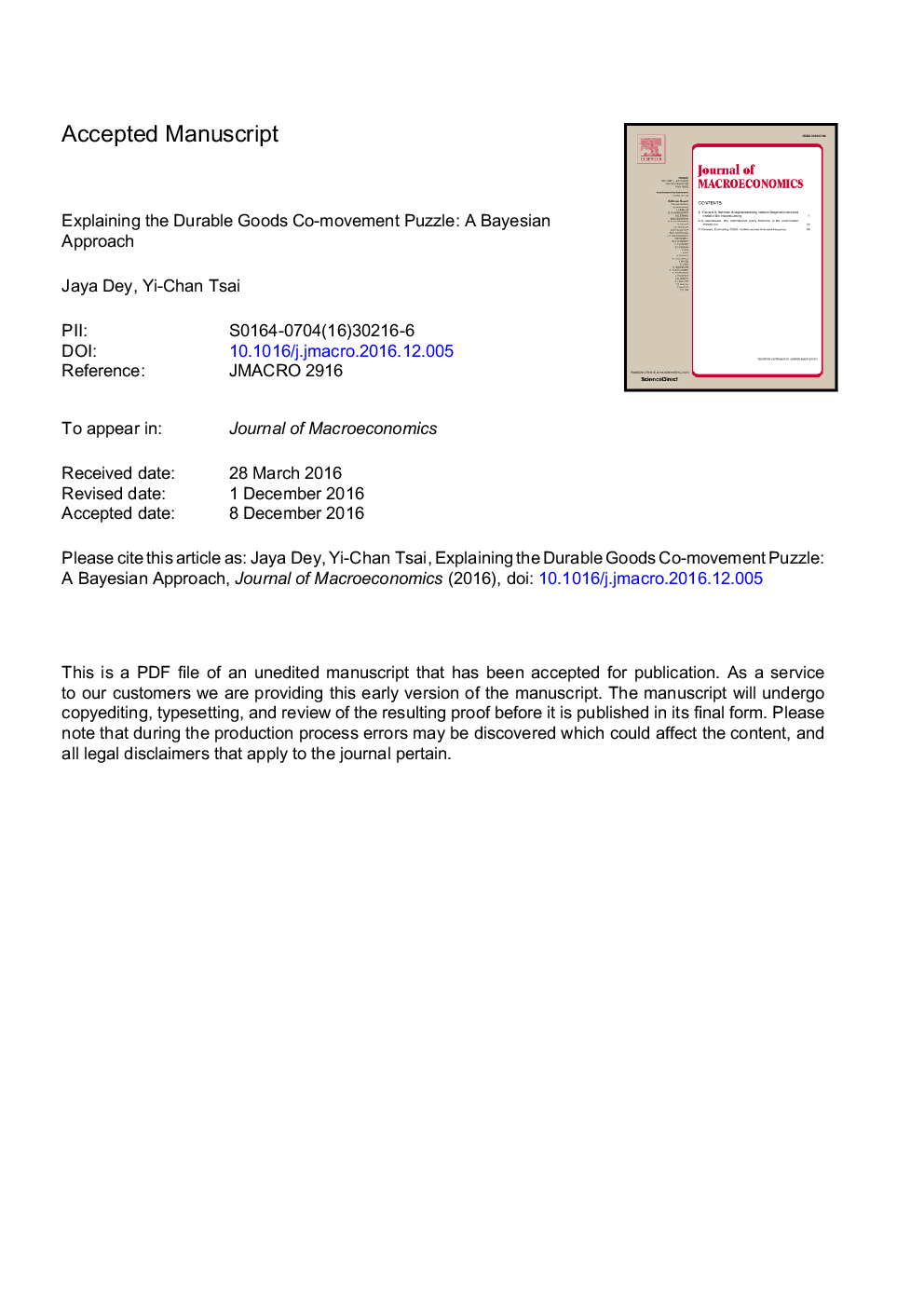| Article ID | Journal | Published Year | Pages | File Type |
|---|---|---|---|---|
| 5101287 | Journal of Macroeconomics | 2017 | 50 Pages |
Abstract
A standard two-sector sticky price model with flexibly priced durables depicts negative comovement between durables and nondurables after a monetary policy shock, which is at odds with the empirical evidence. Several papers have addressed this issue with different model mechanisms, which can essentially be divided into three categories: financial frictions (on the production side or on the household side), stickiness in the price of productive inputs (labor or intermediate goods), and non-separable preferences between labor and composite consumption. While each mechanism can independently resolve the comovement problem, it is unclear which mechanism is empirically most relevant. This paper conducts a horse race among three alternatives that can resolve the puzzle in isolation, namely, a working capital channel with habit formation, sticky wages, and non-separable preferences, using a Bayesian approach. Based on the posterior estimates and a log marginal likelihood comparison exercise, the working capital channel combined with habit formation is the most important mechanism, as it can simultaneously resolve the comovement problem and fit the data well.
Related Topics
Social Sciences and Humanities
Economics, Econometrics and Finance
Economics and Econometrics
Authors
Jaya Dey, Yi-Chan Tsai,
